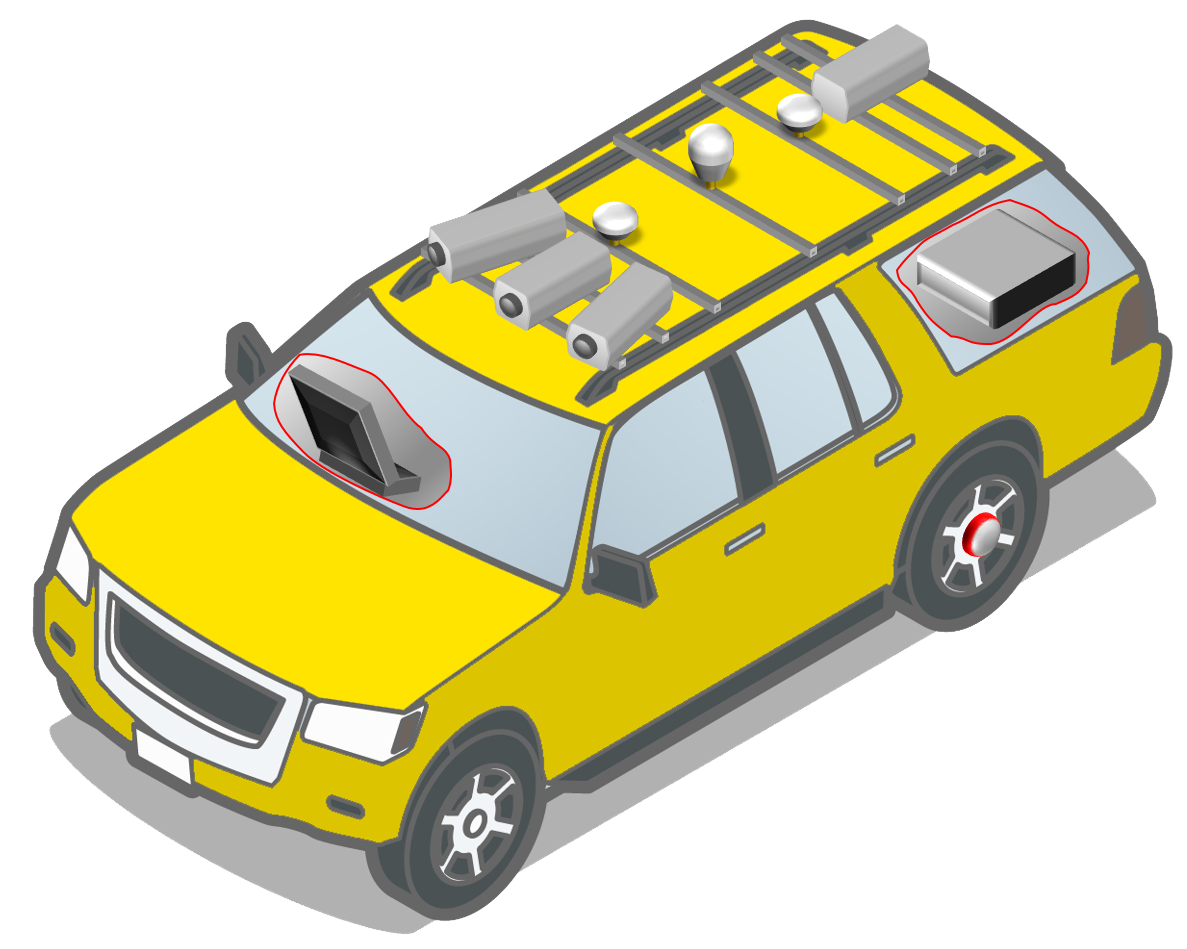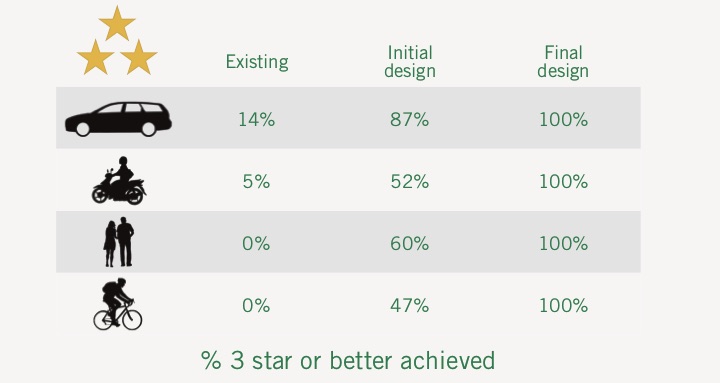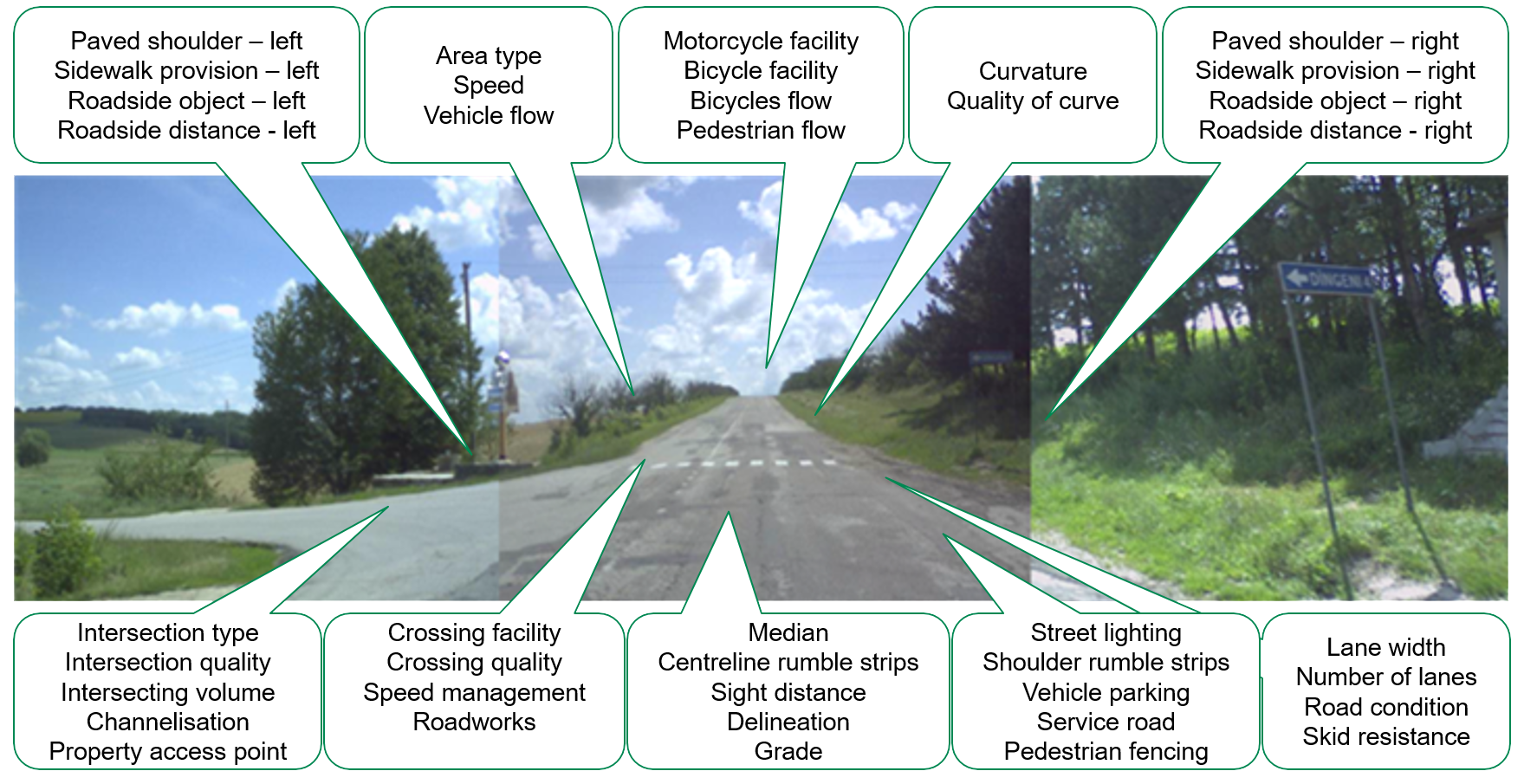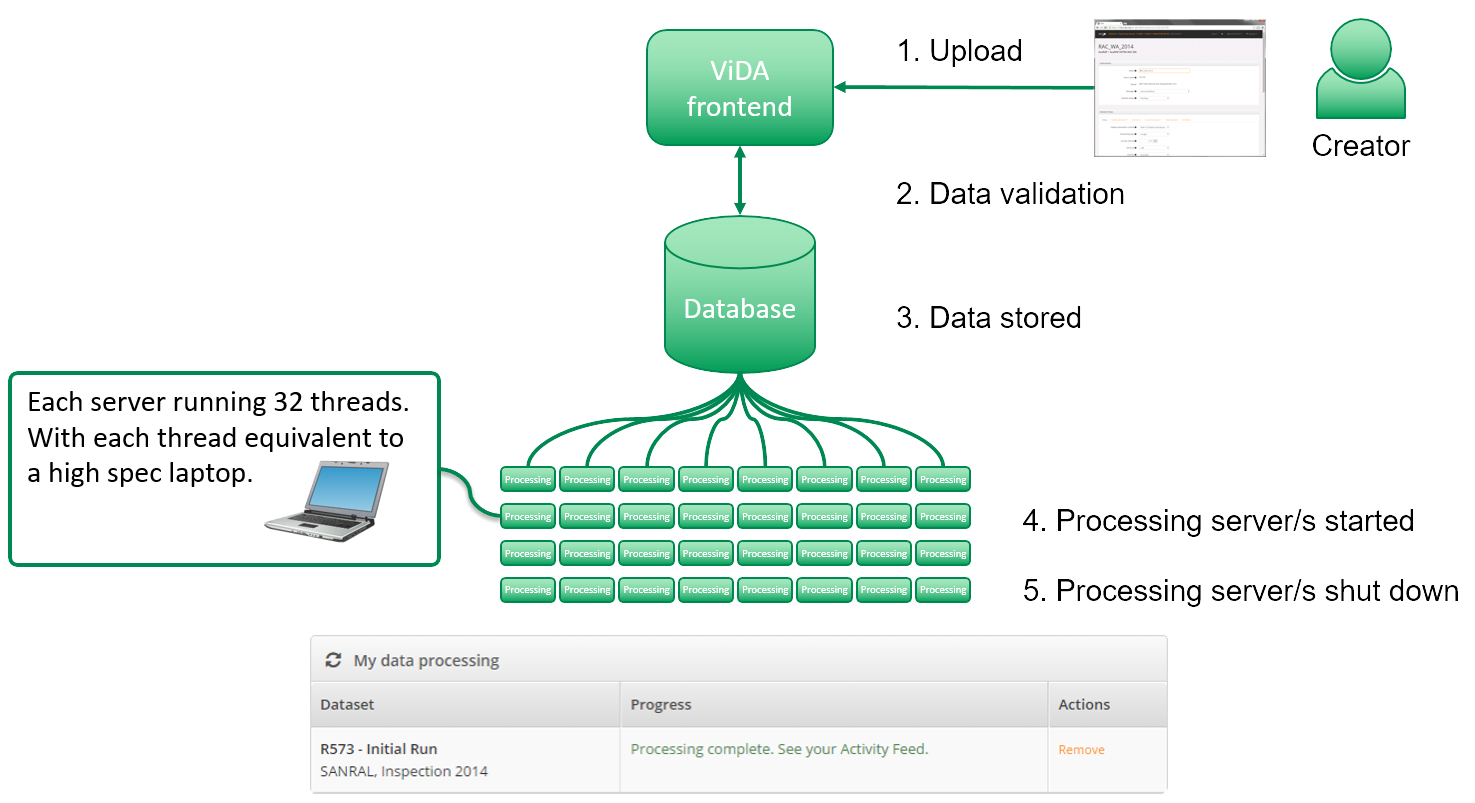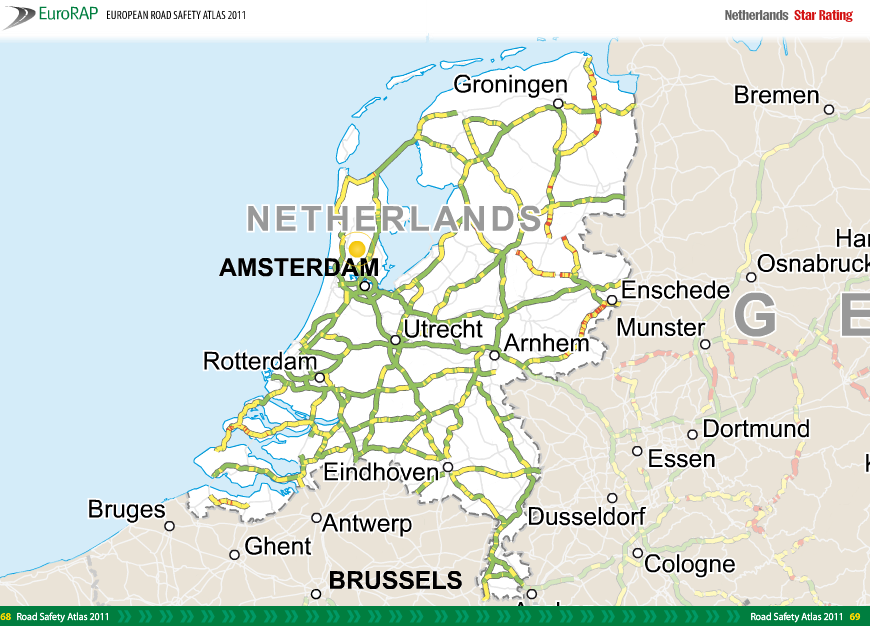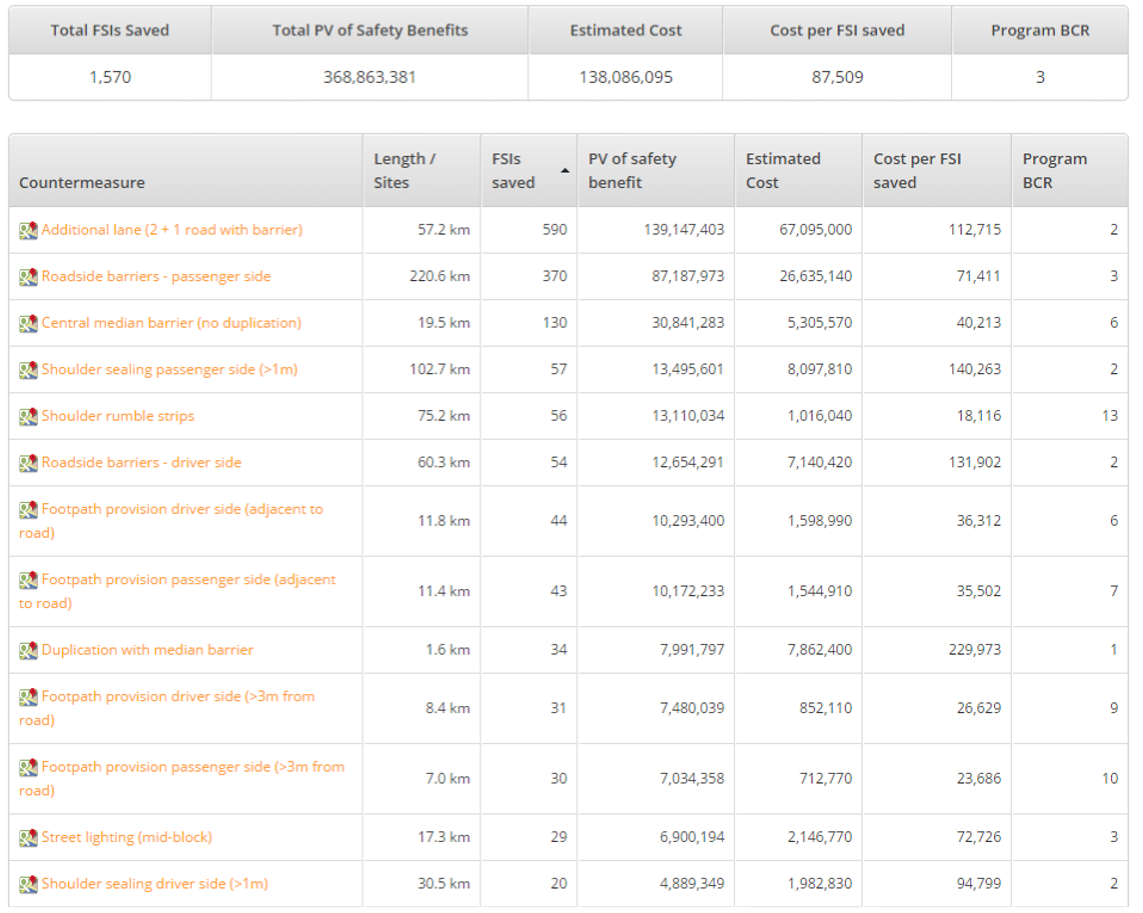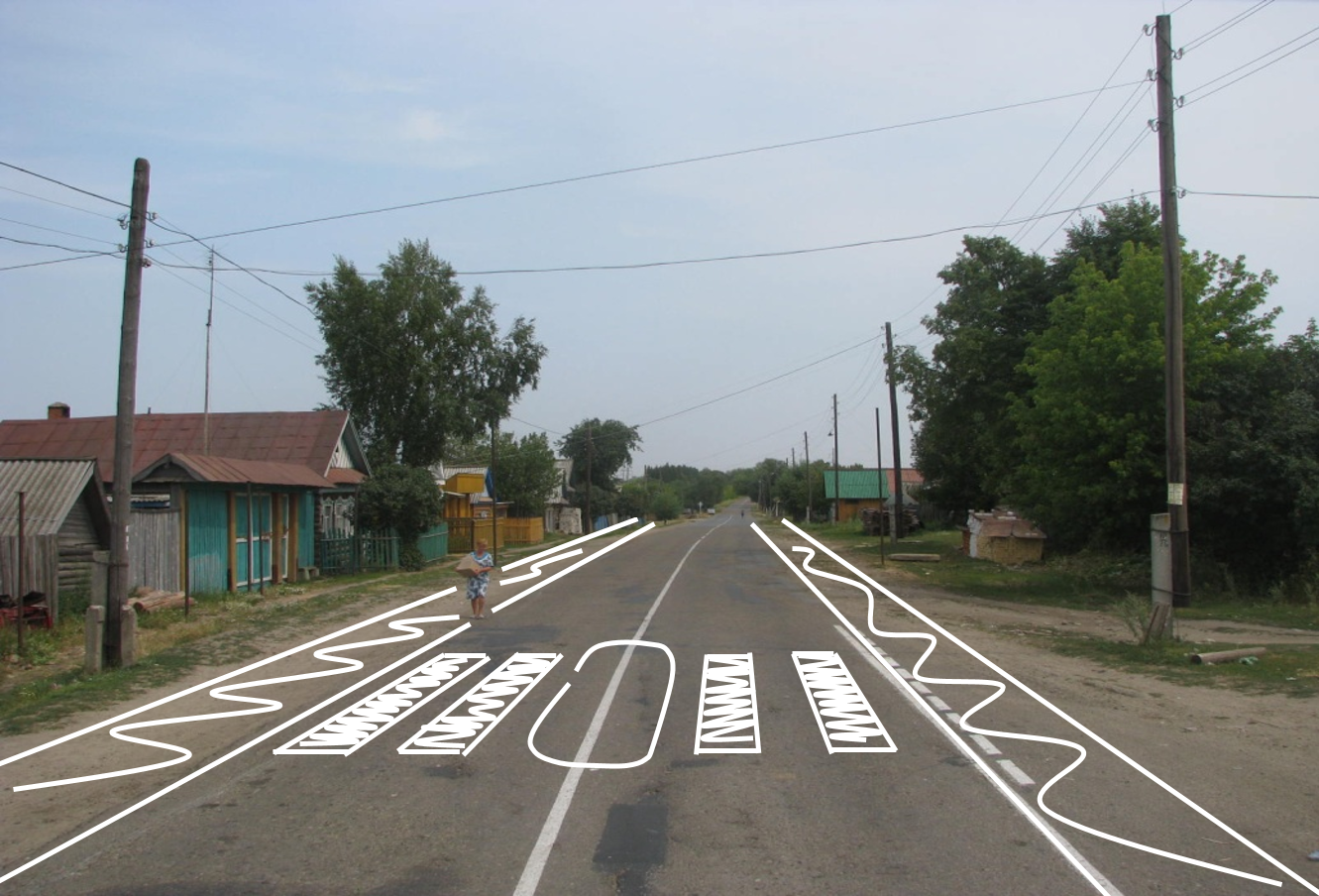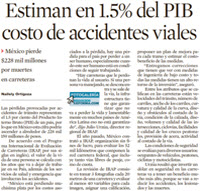
Nov 30, 2012 | News
Leading news agencies in Mexico, including Reforma and terratv, have put a spotlight on the enormous cost of road crash deaths and serious injuries in the country, estimated to exceed US$50 billion each year.
The reports coincide with National Secretariat of Transport (SCT)-led iRAP assessments of more than 45,000km of roads. The assessments cover the federal highway network, including both toll-free and toll roads.
In addition to producing road safety Star Ratings for vehicle occupants, motorcyclists, pedestrians and bicyclists, it is anticipated that the assessments will identify countermeasures that could cut numbers of deaths and serious injuries by more than 25%.
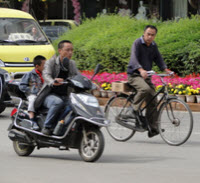
Nov 30, 2012 | News
New road safety inspections are being undertaken by ChinaRAP, a partnership between the Research Institute of Highway (RIOH), Ministry of Transport, and iRAP.
The assessments involve inspections of urban roads in Mengzi and Jianshui (Yunnan) and highways in Shaanxi, and build on similar work already undertaken in Anhui.
The ChinaRAP road safety assessments will help guide multi-million dollar upgrades to the roads, which are financed by local governments and the World Bank and Asian Development Bank respectively.
In parallel to the assessments, ChinaRAP has also begun collaborating with other partners in the Bloomberg Philanthropies-funded Road Safety in 10 Countries Project (RS10). The collaboration is exploring ways that infrastructure improvements can complement efforts to reduce drink-driving rates and speeding in the cities of Dalian and Suzhuo.

Nov 30, 2012 | News
A report released by the International Transport Forum (ITF) at the OECD proposes 12 sets of measures to create safer walking environments.
The report laments that the number of pedestrians killed on roads is estimated at above 400 000 each year – about a third of annual road fatalities around the globe.
Earlier this, iRAP reported that 84% of the approximately 50,000km of roads assessed in low- and middle-income countries where pedestrians are present carry traffic at 40km/h or more and have no footpaths.
The ITF report is timely as pedestrian safety will be the focus of the United Nations Road Safety Week from 6-13 May 2013.
In addition to the new report, ITF is calling for nominations for the Young Researcher of the Year Award. This year’s winner, Ms Wing Yee (Winnie) Lam, a Chinese national, was honoured for a developing a walkability audit as an assessment tool to evaluate the walking environment in urban areas.
Nov 28, 2012 | Report, Resources
Download Click the file icon above to download the file. 2012 iRAP India Phase 2 summary report – Kerala State Transport Project
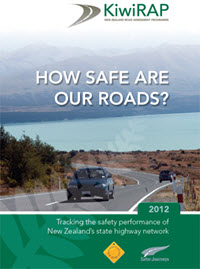
Nov 23, 2012 | News
The new KiwiRAP highway risk-ratings show safety has improved significantly on several Auckland and Northland State Highways over the past five years.
The length of road rated as high or medium-high risk reduced by 18% (from 475km to 388km) as a result of road improvements, including signage upgrades, an extension of roadside barriers, improved lighting and sealed shoulder widening, and targeted Police campaigns against speeding and drinking drivers.
NZTA’s Auckland and Northland Regional Director, Stephen Town said KiwiRAP is a powerful tool for increasing public awareness that not all highways are the same. “Drivers and riders who are aware of the higher risk highways can then adjust their driving to take extra care. Similarly, we can identify safety shortcomings that can then be addressed with practical road safety measures.
The new KiwiRAP report is available at: http://kiwirap.org.nz/downloads.html.

Nov 19, 2012 | News
EuroRAP began as an idea in 1999 to address the unnecessary and preventable toll of death and serious injury on Europe’s roads.
The commitment of its Members has won the programme overwhelming support. In the past decade EuroRAP has grown from a 4-country pilot to a programme now active in over 30 countries.
EuroRAP believes that in the next decade Europe can save at least 0.5% of GDP with an affordable, high return programme – saving at least 300 deaths and serious injuries every day.
To visit the new website, go to http://eurorap.org.
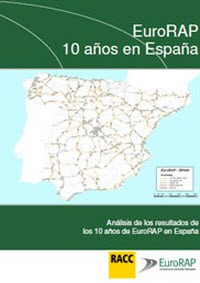
Oct 30, 2012 | News
To celebrate 10 years of EuroRAP in Spain, RACC have released EuroRAP 10 anos en Espana: Analisis de los resultados de los 10 anos de EuroRAP en Espana, looking back over the programme’s development and results.
The study details the evolution of different variables (such as length of the network, AADT and the number of fatal and serious crashes) used to generate EuroRAP risk ratings over the last 10 years, starting with the first EuroRAP study in 2002 through to the most recent in 2011.
The network analysed in the report covers the Spanish Road Network (RCE) spanning 23,528km. Although the total distance travelled on the RCE increased by 6% in the last 10 years, the number of deaths and serious injuries decreased by 58%.
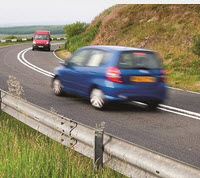
Oct 16, 2012 | News
Simple attention to safety engineering detail has resulted in extraordinary cuts in road deaths and serious injuries, according to the latest tracking survey by the Road Safety Foundation.
Engineering a Safer Future found that fatal and serious injury crashes on 10 stretches of treated road fell by nearly two thirds from 541 to 209 (2001-2005 and 2006-2010) – boosting the economy by £35m every year.
This year’s most improved road is a rural 20km (13 mile) single carriageway section of the A605. Over the two survey periods, fatal and serious crashes fell by 74% from 34 to 9, and its risk rating improved from medium in 2001-2005 to low-medium in 2006-2010.
Engineering a Safer Future was produced with support from Ageas UK. The report measures safety levels across 27,000 miles of motorway and A roads where the majority of UK road deaths occur.
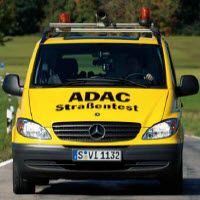
Oct 11, 2012 | Espanol news
El club de automovilismo de Alemania, ADAC, ha encontrado que en redes extra-urbanas, cerca de 50% de las víctimas del tránsito pierden la vida en autopistas y carreteras federales, lo cual representa sólo 10% de la extensión de la red.
Los hallazgos se incluyen en el informe, Road Test 2008-2010 (Prueba en Carretera 2008-2010), que revisa las estadísticas de colisiones, presenta las Clasificaciones por Estrellas de EuroRAP y establece las acciones necesarias para salvar vidas.
El informe también indica que debido a la presencia de peligros laterales a la vía (árboles), las altas tasas de adelantamiento y las altas velocidades en las carreteras federales alemanas, se otorgan Clasificaciones por Estrellas más bajas que las autopistas alemanas y las vías extra-urbanas que soportan volúmenes similares de tránsito en otras partes de Europa.
El informe de la Prueba en Carretera complementa otras evaluaciones de seguridad de la infraestructura realizadas por ADAC; tales como Pedestrian Crossings in Europe (Cruces Peatonales en Europa), que evaluó la seguridad en 285 cruces en 19 ciudades.
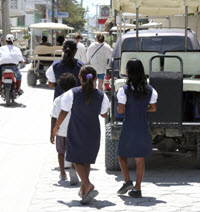
Oct 11, 2012 | Espanol news
El tramo de 80 km de la Autopista Occidental de Belice se tornará mucho más seguro gracias a los esfuerzos del gobierno y del Banco de Desarrollo del Caribe.
Una evaluación reciente de iRAP encontró que casi toda la autopista está clasificada con 1 ó 2 estrellas para ocupantes de vehículos, quienes representan el mayor número de muertes en las carreteras de Belice.
Como parte del proyecto, las mejoras en la infraestructura vial se complementarán con esfuerzos por crear conciencia entre los usuarios de las vías, lograr un mayor cumplimiento de las reglas de tránsito, tener una mejor respuesta post-colisión, y brindar mayor capacitación.
Después de que se completen las mejoras en la infraestructura, se utilizarán evaluaciones de IRAP adicionales para medir las reducciones en el nivel de riesgo.
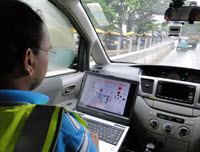
Oct 11, 2012 | Espanol news
Se tiene planeado realizar mejoras importantes en la seguridad de las vías de alto riesgo en Bangladesh.
La segunda ronda de evaluaciones de iRAP está enfocándose en cerca de 1,300 km de vías nacionales y regionales, muchas de las cuales serán modernizadas en los próximos años.
Las evaluaciones están siendo lideradas por el RHD y son parte del Road Safety Improvement Program (Programa de Mejoramiento de la Seguridad Vial) de ADB. El Programa es una de las iniciativas de seguridad vial más importantes del Banco en los últimos años e incluye inversiones tanto en fortalecimiento de capacidades como ejecución de proyectos.
iRAP está trabajando con consultores y grupos de interés locales, incluyendo BUET, BRAC y CIPRB. El proyecto también se ha beneficiado de la contribución voluntaria de Gina Waibl, una de las principales contribuyentes de KiwiRAP.
Oct 11, 2012 | Espanol news
Cerca de 45,000 km de vías han sido inspeccionadas como parte de la estrategia del Gobierno de México de brindar vías seguras para promover el desarrollo económico y social.
El proyecto de iRAP está siendo liderado por la Secretaría de Comunicaciones y Transporte (SCT) y utilizará las Clasificaciones por Estrellas para medir el riesgo de la infraestructura en 10% de las carreteras de la nación (un tercio de todas las vías pavimentadas).
Junto con los datos de iRAP, las inspecciones están recolectando datos sobre pavimentación que se utilizarán para la gestión de activos, haciendo muy costo efectivo el proceso. El proyecto también será el primero en utilizar el nuevo software en línea de iRAP, ViDA, que ofrece velocidades de procesamiento significativamente mayores y capacidad de elaboración de reportes más exhaustivos.
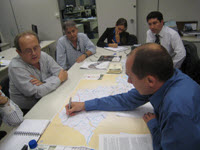
Oct 11, 2012 | Espanol news
Con el apoyo del Fondo Global para la Seguridad Vial y Bloomberg Philanthropies, Brasil y Egipto pronto iniciarán la Clasificación por Estrellas de redes viales estratégicas y prepararán Planes de Inversión para Vías Más Seguras.
La Organización Mundial de la Salud (OMS) estima que cerca de 60,000 personas mueren cada año en colisiones viales en Brasil y Egipto.
Las evaluaciones, que ahora se encuentran en las etapas de planificación preliminar, ayudarán a identificar las ubicaciones de los tramos de alto riesgo de la vía y propondrán tratamientos de ingeniería que sean asequibles, particularmente para los peatones quienes figuran notablemente en las estadísticas de mortalidad en las vías.
Los esfuerzos en Brasil y Egipto complementan las evaluaciones viales que ya se están realizando en Rusia, India y China también con el apoyo de GRSF y Bloomberg Philanthropies.

Oct 11, 2012 | Espanol news
El primer Taller de Innovación de iRAP se llevó a cabo en la oficina central de TRL en el Reino Unido y reunió a expertos en ingeniería de la seguridad vial de todo el mundo.
Los participantes del taller discutieron el hecho de que durante los próximos 12 meses se llevarán a cabo evaluaciones de iRAP en cerca de 150,000 km de vías en países de bajos y medianos ingresos – tres veces más que en los últimos cinco años.
Los participantes también consideraron formas en que la innovación en metodología, tecnología, políticas y procesos permitirá apoyar el crecimiento masivo de las evaluaciones y garantizar que los resultados se traduzcan en mejoras que permitan salvar vidas en las carreteras.
Las notas del taller que resumen las presentaciones hechas por los participantes están disponibles en línea para ser descargadas.
Oct 1, 2012 | Report, Resources
Download Click the file icon above to download the file. 2012 iRAP report – Vaccines for Roads: Second edition (English)
Oct 1, 2012 | Report, Resources
Download Click the file icon above to download the file. 2012 iRAP report – Vaccines for roads: Second edition (French)
Sep 17, 2012 | News
Some 45,000km of roads have now been surveyed as part the Government of Mexico’s strategy to provide safe roads for economic and social development.
The iRAP project is being led by the National Secretariat of Transport (SCT) and will make use of Star Ratings to benchmark infrastructure risk across 10% of the nation’s roads (a third of all paved roads).
Along with iRAP data, the surveys are collecting pavement data that will be used for asset management, making the undertaking very cost effective. The project will also be the first to make use of iRAP’s new online software, ViDA, which offers greatly increased processing speeds and more expansive reporting.

Sep 9, 2012 | News
With the support of the Global Road Safety Facility and Bloomberg Philanthropies, Brazil and Egypt will soon Star Rate strategic road networks and prepare Safer Roads Investment Plans.
The World Health Organisation (WHO) estimates that a combined 66,000 people are killed in road crashes in Brazil and Egypt each year.
The assessments, which are now in the preliminary planning stages, will help to identify the locations of high-risk sections of road and propose affordable engineering treatments, particularly for pedestrians, who feature prominently in road deaths statistics.
The efforts in Brazil and Egypt complement road assessments already underway in Russia, India and China that are also supported by GRSF and Bloomberg Philanthropies.

Sep 9, 2012 | News
German auto-club, ADAC, has found that on extra-urban networks, almost 50% of traffic victims lose their lives on motorways and federal roads, which account for only 10% of the network length.
The findings are contained in the report, Road Test 2008-2010, which reviews crash statistics, presents EuroRAP Star Ratings and sets out actions required to save lives.
The report also finds that the presence of roadside hazards (trees), high overtaking rates and high speeds on German federal highways mean they get poorer Star Ratings than both German motorways and extra-urban roads carrying similar volumes of traffic elsewhere in Europe.
The Road Test report complements other road infrastructure safety assessments conducted by ADAC, such as Pedestrian Crossings in Europe, which assessed safety at 285 crossings in 19 cities.

Aug 17, 2012 | News
Safety on an 80km section of the Western Highway in Belize is set to become much safer, thanks to efforts of the Government and Caribbean Development Bank.
A recent iRAP assessment found that nearly the entire highway is rated 1- or 2-stars for vehicle occupants, who account for the majority of road deaths in Belize.
As part of the project, road infrastructure improvements will be complemented by efforts to raise awareness among road users; increased enforcement of road rules; better post-crash response; and training.
After infrastructure improvements are completed, further iRAP assessments will be used to measure reductions in risk.

Aug 17, 2012 | News
The first iRAP Innovation Workshop was held at TRL headquarters in the United Kingdom and brought together experts in road safety engineering from around the world.
Participants at the workshop discussed the fact that during the next 12 months iRAP assessments will be conducted on some 150,000km of roads in low- and middle-income countries – three times as many as in the past five years.
Participants also considered ways in which innovation in methodology, technology, policy and processes will help support the massive growth in assessments and ensure the results translate into life-saving road improvements.
Notes from the workshop that summarise presentations made by participants are available for download.
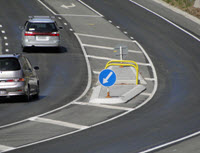
Aug 1, 2012 | News
The Road Safety Toolkit is designed to provide free information on the causes and prevention of road crashes that cause death and injury.
References recently added to the Toolkit include links to:
If you have any suggestions or would like to submit a case study, please contact Greg Smith (greg.smith@irap.org).

Aug 1, 2012 | News
Major safety improvements are in the pipeline for high-risk roads in Bangladesh.
A second round of iRAP assessments are focusing on some 1,300km of national and regional roads, many of which will be upgraded in coming years.
The assessments are being led by the RHD and are part of the ADB’s Road Safety Improvement Program. The Program is one of the most significant road safety initiatives of the Bank in recent years and includes both capacity-building and downstream investments.
iRAP is working with local consultants and stakeholders, including BUET, BRAC and CIPRB. The project has also benefited from the voluntary contribution of Gina Waibl, a leading contributor to KiwiRAP.
Jun 22, 2012 | Report, Resources
Download Click the file icon above to download the file. 2012 iRAP report – Innovation workshop summary notes
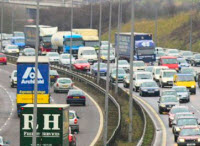
May 31, 2012 | Espanol news
Un nuevo informe de la Fundación para la Seguridad Vial sostiene que las autopistas de Inglaterra actualmente no proveen suficiente protección a los automovilistas y pasajeros por lo que se debe considerar elevar el límite de velocidad a 80 mph.
La evaluación ‘Unfit for 80’ sostiene que si bien los autos brindan una protección contra colisiones de 4 ó 5 estrellas, muchas autopistas solo tienen una clasificación de 3 estrellas y ofrecen una protección insuficiente en caso de colisiones por salida de la vía.
Los costos asociados con las 800 colisiones viales graves que se producen anualmente llegan a £0.4 billones – y ese monto se duplica si se consideran las demoras en el tráfico generadas por la colisión.
El informe requiere que las motovías cumplan un estándar mínimo de 4 estrellas para el año 2020.






















